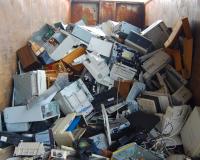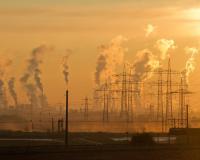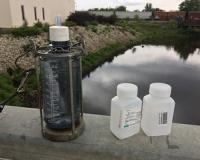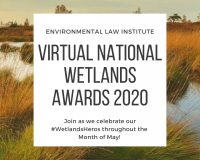
Vibrant Environment
Pollution Control
All | Biodiversity | Climate Change and Sustainability | Environmental Justice | Governance and Rule of Law | Land Use and Natural Resources | Oceans and Coasts | Pollution Control

The fashion industry is thirsty. Every year, it consumes 93 billion cubic meters of water—enough for the survival of over 5 million people. The problems within the fashion industry go beyond water use. Due to the rise in fast fashion, global clothing production has exponentially increased, doubling between 2000 and 2014. Fashion is now the second-most polluting industry worldwide.

In May 2016, EPA issued a lifetime Health Advisory (HA) of 70 parts per trillion (0.07 ug/L) for the combination of two per- and polyfluoroalkyl substances (PFAS) chemicals, PFOS and PFOA, in drinking water. EPA’s HA is not enforceable or regulatory—it provides technical information to state agencies and other public health officials on health effects, analytical methodologies, and treatment technologies associated with drinking water contamination. In EPA’s subsequent 2019 PFAS Action Plan, EPA noted that over 4,000 PFAS may have been manufactured and used in a variety of industries around the world since they were first synthesized in the 1940s. Because PFAS are water soluble, over time PFAS from firefighting foam, manufacturing sites, landfills, spills, air deposition from factories and other releases can seep into surface soils and potentially percolate into groundwater, thus implicating drinking water sources.

Environmental Protection Agency chief Andrew Wheeler proudly details the administration’s deregulatory record in a Newsweek opinion article published in late July. He frames his success story within President Trump’s January 2017 executive order requiring agencies to eliminate two regulations for each new one. While Wheeler touts the avoided costs, he doesn’t mention the avoided benefits the repealed rules would have provided.

Among the dizzying array of commercials and advertisements we see every day, a new electronic product seems to join the lineup every other month. Almost like clockwork, for example, Apple releases its newest edition of the iPhone early in the fall. The company generates worldwide anticipation for the new model, with people frantically pre-ordering and lining up hours in advance to purchase a phone they only plan to use until the following year, when Apple will once again release a newer, sleeker generation of the iPhone.

Numerous studies have shown that Black and Latinx communities in the United States face higher hospitalization and mortality rates from COVID-19 and are disproportionately harmed by the virus. While many cite comorbidities and underlying health issues as the reasons for this disparity, the root of this problem is systemic racism. Recent research has found that social determinants like access to healthcare, employment, and clean air and water are the true inequities that have made COVID-19 deadliest for communities of color.

Though the remediation of Superfund and brownfield sites protects the environment by removing harmful contaminants, the cleanup process itself can produce a significant environmental footprint. Remediation often involves technologies and heavy-duty construction equipment that is powered by fossil fuels and emits air pollution. How can we reduce the environmental footprint of the remediation process at these contaminated sites?

In Part One of this blog, I discussed the negative impacts of per- and polyfluoroalkyl substances (PFAS) and the lack of regulation in the United States as compared to the European Union (EU). This second part proposes three policy options for the U.S. government to consider: (1) regulating the production of PFAS; (2) limiting the ingestion of PFAS through drinking water; and (3) providing funding for federal cleanup of PFAS-contaminated sites.

Whether or not you follow chemical regulations, you’ve probably heard of PFAS, per- and polyfluoroalkyl substances, a class of over 4,700 synthetic compounds. While many have discussed the risks of PFAS for human health, regulation is lacking in the United States to limit its use. So, what are the risks posed by PFAS and what policy measures might prove effective in mitigating their potential harm? This two-part blog will explore the answers to these questions.

The coronavirus pandemic is affecting a variety of industries, from travel to retail to restaurants. But perhaps the hardest-hit are meat and poultry processing plants, which have been experiencing outbreaks throughout the United States. In April, President Trump issued an Executive Order declaring these plants “critical infrastructure” to make sure they stay open, and the number of cases in these plants continued to rise in the days and weeks that followed. According to the Midwest Center for Investigative Reporting, as of June 15 there have been over 25,000 reported positive cases tied to meatpacking facilities in at least 235 plants in 33 states, and at least 90 reported worker deaths at 39 plants in 24 states.

The Environmental Law Institute (ELI) is pleased to announce the winners of the 31st Annual National Wetlands Awards: Mark Beardsley; John W. Day Jr.; Trinity Favazza; Ted LaGrange; Sam Lovall; and Robert Wade. Together, these awardees have restored, researched, and protected thousands of acres of wetlands nationwide; their examples have inspired many members of their community to act and make a difference to protect and improve these vital natural resources.